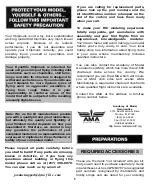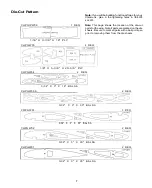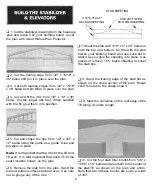
• BUILDS QUICKLY
• REALISTIC FUN SCALE® MODEL
• HUGE, 89" WINGSPAN (IMAA Legal)
READ THROUGH THIS INSTRUCTION MANUAL FIRST. IT CONTAINS
IMPORTANT INSTRUCTIONS AND WARNINGS CONCERNING THE ASSEMBLY
AND USE OF THIS MODEL.
Instruction Manual
WARRANTY
Dynaflite guarantees this kit to be free from defects in both material and workmanship at the
date of purchase. This warranty does not cover any component parts damaged by use or
modification. In no case shall Dynaflite's liability exceed the original cost of the purchased kit.
Further, Dynaflite reserves the right to change or modify this warranty without notice. In that
Dynaflite has no control over the final assembly or material used for final assembly, no liability
shall be assumed nor accepted for any damage resulting from the use by the user of the final
user-assembled product. By the act of using the user-assembled product, the user accepts all
resulting liability. If the buyer is not prepared to accept the liability associated with the use of
this product, return this kit immediately in new and unused condition to the place of purchase.
CHPGP03 Printed in USA V1.0 Entire Contents © Copyright 2000


































